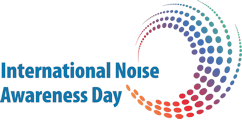Occupational Noise facts
There are an estimated 48 million people in the United States with impaired hearing. Exposure to noise is one of the leading causes of hearing loss. Millions of Americans are exposed to dangerous levels of noise in the workplace, and it is estimated that one-in-four workers exposed to high levels of noise in the workplace will develop a hearing loss.
professions at Risk
Firefighters, police officers, factory workers, farmers, construction workers, military personnel, heavy industry workers, musicians and entertainment industry professionals all work in environments that pose noise risks. Even office staff employed in crowded office buildings with phones ringing and the constant hum of computers, air conditioners and fans are faced with the annoyance and increased stress noise creates. Noise in the workplace is bothersome. Beyond that, it can pose a safety risk by reducing concentration and increasing worker injuries. Repeated exposure to high levels of noise in the workplace can cause permanent hearing loss.
How loud is too loud?
Continued exposure to noise above 70 dBA (adjusted decibels) over time can cause hearing loss, according to the National Institute on Deafness and Other Communication Disorders (NIDCD). The volume (dBA) and the length of exposure to the sound will tell you how harmful the noise is. In general, the louder the noise, the less time required before hearing loss will occur.
It's important to note that the National Institute for Occupational Safety and Health (NIOSH) provides guidance for safe levels for occupational noise exposure. According to NIOSH, a safe noise level is considered to to be 85 dBA or below, which is the recommended exposure limit for an eight-hour workday. This workplace limit is not safe for children whose auditory system is still developing, and their ears have to last a lifetime. We recommend following the NIDCD's guidelines to limit exposure to noise above 70 dBA.
hearing conservation in the workplace
If it is not possible to reduce noise levels in the workplace through engineering and/or administrative controls and when noise exposures are at an eight-hour time-weighted average level of 85 dBA or more, OSHA’s Hearing Conservation Amendment 29 CFR 1910.95 requires that the employer implement a five-phase hearing conservation program. The program includes noise monitoring to measure sound levels; hearing testing to obtain baseline measures of employees’ hearing as well as annual hearing evaluations; employee training on the impact of noise on hearing, the use and purpose of hearing protection and the results of hearing testing; hearing protection made available for all employees; and recordkeeping of all measurements and testing. To avoid noise-induced hearing loss, OSHA recommends that hearing protection be worn in the workplace when loudness levels and exposure times exceed the allowable standards.
